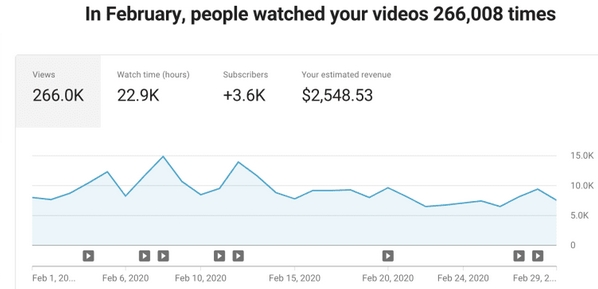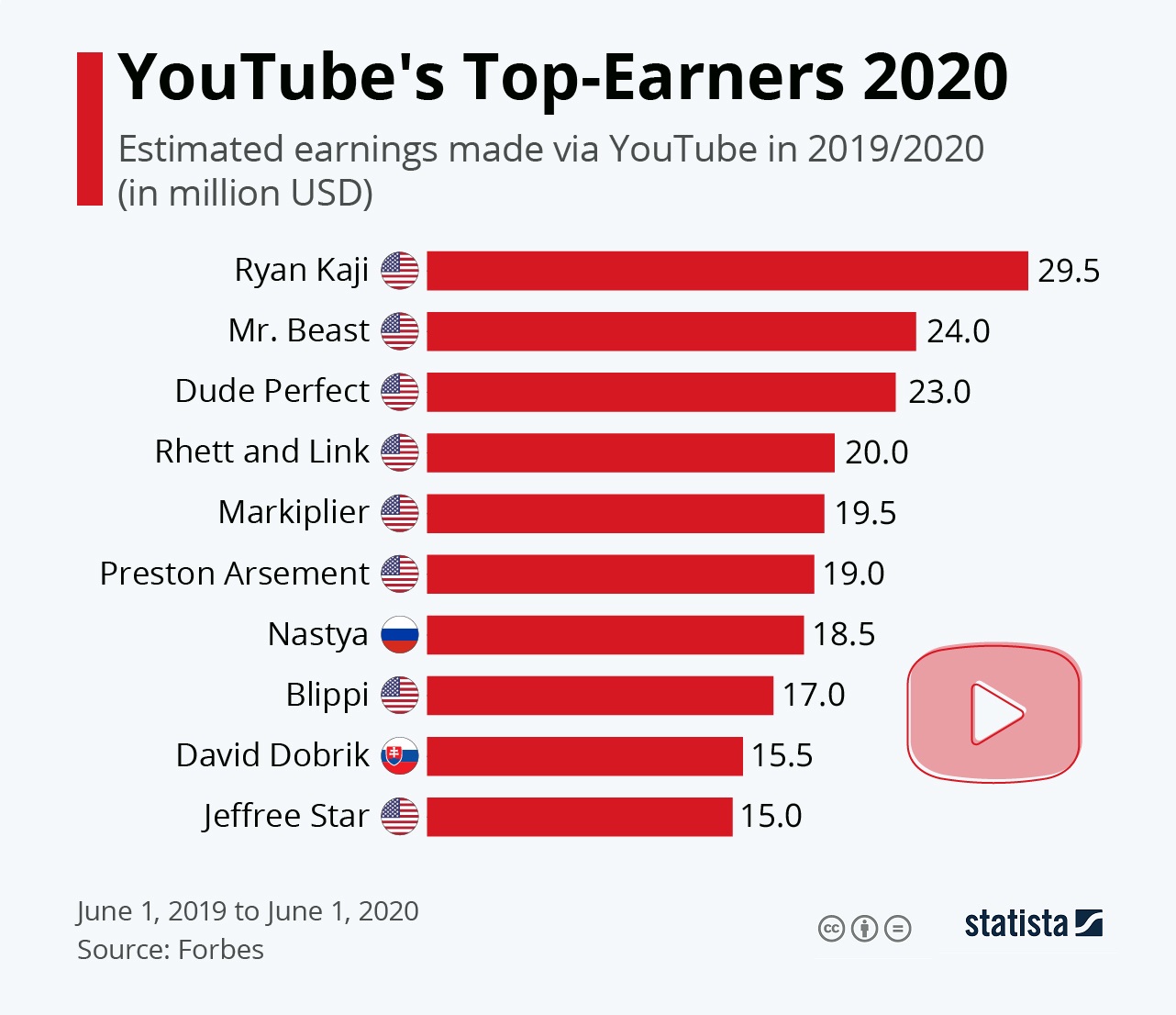YouTube has transformed the way we consume content and has opened a world of opportunities for creators to monetize their passion. Understanding how YouTube monetization works is essential for anyone looking to turn their channel into a revenue-generating venture. In essence, monetization allows creators to earn money from their videos through various mechanisms, primarily by leveraging the platform's advertising system.
When you think about a million views on YouTube, the first question that often arises is: how much money can I make? While there isn’t a straightforward answer—since earnings can vary based on various factors—it’s crucial to understand the fundamentals of how monetization works. With a focus on ad revenue, sponsorships, merchandise, and more, creators have multiple strings to their income bow.
Ultimately, YouTube monetization isn’t just about posting videos; it’s about producing engaging, high-quality content that resonates with audiences. As you read further, you’ll come to appreciate the value of analytics, audience engagement, and brand partnerships in optimizing your earning potential on the platform.
Understanding YouTube Ads and Revenue Streams

Diving deeper into YouTube's monetization mechanics, let's talk about ads—the primary source of income for most creators. YouTube utilizes a variety of ad formats, including:
- Display Ads: These are banner ads that appear on the right side of the video while watching on a computer.
- Overlay Ads: Semi-transparent ads that appear on the lower portion of the video, typically available for desktop viewers.
- Skippable Video Ads: Viewers can skip these ads after five seconds, and they can appear before, during, or after the main video.
- Non-Skippable Video Ads: These ads must be watched before the content can be viewed and usually last 15-30 seconds.
- Bumper Ads: Short, non-skippable ads that last for six seconds and are designed to create quick brand awareness.
With numerous ad formats available, some of the factors that influence earnings are:
| Factor | Description |
|---|---|
| CPM (Cost Per Mille) | This represents how much advertisers pay per 1,000 views of an ad. Higher CPMs generally mean higher revenue. |
| Audience Demographics | Brands may pay more for ads targeting certain demographics, such as age, location, or interests. |
| Engagement Rates | The more engaged your audience is, the more likely they are to interact with ads, increasing overall earnings. |
Besides ads, YouTube creators have additional revenue streams, including:
- Sponsorships: Collaborating with brands for promotional content.
- Merchandise Sales: Selling products directly to your audience.
- Channel Memberships: Providing exclusive content to subscribers for a fee.
- Super Chat and Super Stickers: Features that allow viewers to donate money during live streams.
By understanding these various revenue streams, creators can maximize their earnings potential and tailor their content strategy to capture the attention of advertisers and engage their audience effectively.
Factors Influencing Earnings from YouTube Views

When it comes to figuring out how much money you can make from a million views on YouTube, there’s no one-size-fits-all answer. Several elements come into play that can significantly affect your earnings. Here’s a breakdown of the key factors:
- Ad Revenue: The most common way YouTubers earn money is through ads. The amount you earn per thousand views (CPM) varies based on several things:
- Location of viewers
- Content category (certain niches attract higher CPMs like finance or tech)
- Time of year (advertising budgets tend to increase during holidays)
- Engagement Rate: Channels with a high engagement rate (likes, comments, shares) generally earn more. Advertisers love engaged audiences, so they tend to spend more on channels that connect well with viewers.
- Audience Demographics: The age and interests of your audience can drastically influence earnings. For example, targeting a younger demographic may yield lower CPMs compared to an older, more affluent audience.
- Content Type: Certain types of content, like tutorials or product reviews, often attract higher CPMs because they are more likely to lead to purchases or sign-ups.
Understanding these factors can help you strategize more effectively and boost your potential earnings from YouTube views!
Case Studies of Successful YouTube Channels

To truly grasp the earning potential from a million views on YouTube, let’s take a look at some stellar case studies of channels that have hit milestones and achieved financial success.
| Channel Name | Content Type | Earnings Estimate (per million views) | Key Strategies |
|---|---|---|---|
| Ryan's World | Toy Reviews & Kids’ Content | $500 - $2,000 | Partnerships, Merchandising |
| Nigahiga | Comedy & Music | $1,000 - $3,000 | Consistent uploads, Engaging content |
| Felicia Day | Gaming & Geek Culture | $2,000 - $5,000 | Niche targeting, Strong community |
These channels demonstrate not just the earnings potential, but also the incredible diversity in content and monetization strategies. From toy reviews to comedy sketches, successful YouTube creators adapt their tactics based on their audience and niche. If you're keen on drawing inspiration, these case studies can be a great jumping-off point!
Estimated Earnings Per Thousand Views (EPMV)
When it comes to YouTube earnings, one of the most common metrics you'll hear is EPMV, which stands for Estimated Earnings Per Thousand Views. This metric gives creators a clearer picture of their monetization potential and can vary significantly between channels and types of content.
So, how does EPMV work? Essentially, it's calculated by taking your total earnings from ads and dividing it by the number of views in thousands. The formula looks something like this:
EPMV = (Total Earnings / Total Views) x 1000
For instance, if a channel earned $1,000 from 500,000 views, the EPMV would be:
EPMV = ($1,000 / 500,000) x 1000 = $2
That means the channel earns approximately $2 for every 1,000 views, which can vary widely across the platform. Here’s a quick breakdown of what influences EPMV:
- Audience Demographics: Advertisers pay more for ads targeting specific age groups or locations.
- Content Type: Some niches like finance and technology typically attract higher-paying ads.
- Ad Formats: Different ad types (e.g., skippable vs non-skippable) bring in different rates.
- Seasonal Trends: Certain times of the year, like holidays, drive higher ad spend.
This means that while a million views can sound fantastic, the actual earnings may fluctuate dramatically based on these factors. Understanding EPMV is crucial for creators aiming to maximize their revenue!
Comparing Different Types of Content and Their Earnings
When you're diving into YouTube's earnings landscape, it becomes clear that not all content is created equal. Some types of videos command premium ad rates and result in significantly higher earnings compared to others. Let’s explore a few popular content types and their typical earnings.
| Content Type | Average EPMV ($) | Comments |
|---|---|---|
| Gaming | $1 - $3 | Popular among younger audiences, but ad revenue can be low due to high competition. |
| Vlogs | $2 - $5 | Personal connection can lead to high engagement, but earnings can vary based on content. |
| Tech Reviews | $5 - $10 | Advertisers see value in tech audiences, thus, these channels often have higher EPMVs. |
| Finance | $10 - $30 | Financial education attracts high-paying advertisers, leading to lucrative earnings. |
| Beauty and Fashion | $3 - $8 | This niche is competitive but has a wealth of sponsorship opportunities. |
As you can see from the table above, the niche you choose can make a huge difference in earnings. While lifestyle and entertainment channels may appeal to a broad audience, financial content and tech reviews tend to earn way more per view due to their specific audience demographics.
Keep in mind, however, that building a successful channel takes time, creativity, and consistency. Understanding these dynamics can help you strategize better and optimize your content for higher earnings!
7. Tips for Increasing Your YouTube Revenue
Alright, so you've got your YouTube channel up and running, and you're aiming to turn those views into cash. While hitting that million views milestone is impressive, there are savvy strategies to boost your YouTube earnings even further. Here are some tips to consider:
- Create Quality Content: Craft videos that are informative, entertaining, or valuable. Content is king, and viewers are more likely to stick around—and share—engaging videos.
- Optimize Video SEO: Use relevant keywords in your titles, descriptions, and tags. This helps improve your visibility in search results, drawing in more organic traffic.
- Consistency is Key: Upload regularly, whether it’s weekly or bi-weekly. This keeps your audience engaged and coming back for more, improving viewer retention.
- Engage with Your Audience: Respond to comments, ask for feedback, and create community polls. This strengthens viewer loyalty and encourages more interactions, which can be beneficial for the YouTube algorithm.
- Diversify Revenue Streams: Consider incorporating merchandise, Patreon memberships, or affiliate marketing into your strategy. This can significantly amplify your earnings beyond ad revenue.
- Collaborate with Other Creators: Partnering with other YouTubers can help you tap into new audiences and grow your subscriber base.
- Analyze Your Data: Regularly review your analytics to understand which videos perform best, which demographics engage most, and optimize your content strategy accordingly.
Utilizing these strategies can help maximize your YouTube earnings potential, turning that dream of financial independence into a reality!
8. Conclusion: The Future of Earnings on YouTube
As we look toward the future, YouTube continues to evolve. The platform has diversified its monetization options, adapting to the changing landscape of digital content. While the traditional ad revenue model remains significant, creators now have more avenues to explore when it comes to earning money. Here's what we can expect moving forward:
| Future Trends | Description |
|---|---|
| Increased Focus on Community Engagement | Platforms that foster strong community connections will likely thrive, enhancing creator support and monetization through memberships and fan funding. |
| Shift Towards Short-Form Content | With the rise of YouTube Shorts, monetizing bite-sized content might become a dominant trend, changing how creators interact with their audience. |
| Enhanced Analytics Tools | Advanced data insights will empower creators to tailor their strategies more effectively, driving higher engagement and, consequently, revenue. |
| Brand Collaborations. | As influencers hold more sway in consumer behavior, the demand for authentic brand partnerships will grow, presenting lucrative opportunities. |
Ultimately, the future of earnings on YouTube looks bright for those who are adaptable and willing to innovate. With a little creativity and tenacity, your channel can not only captivate audiences but also become a sustainable source of income.










